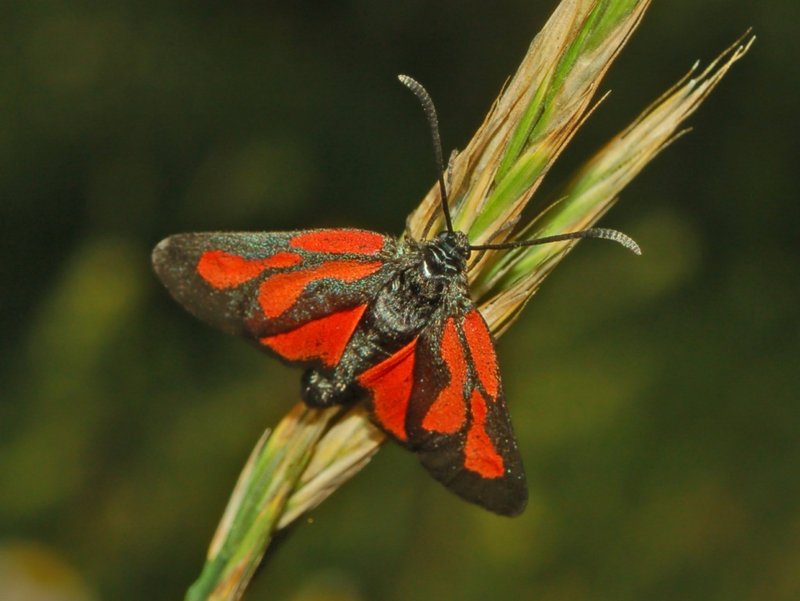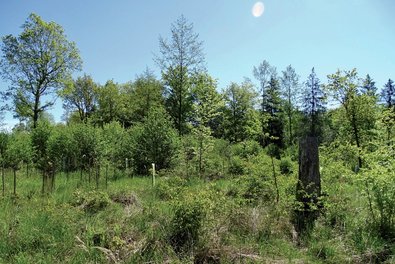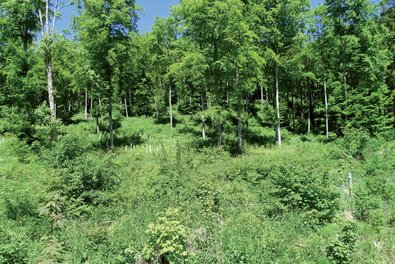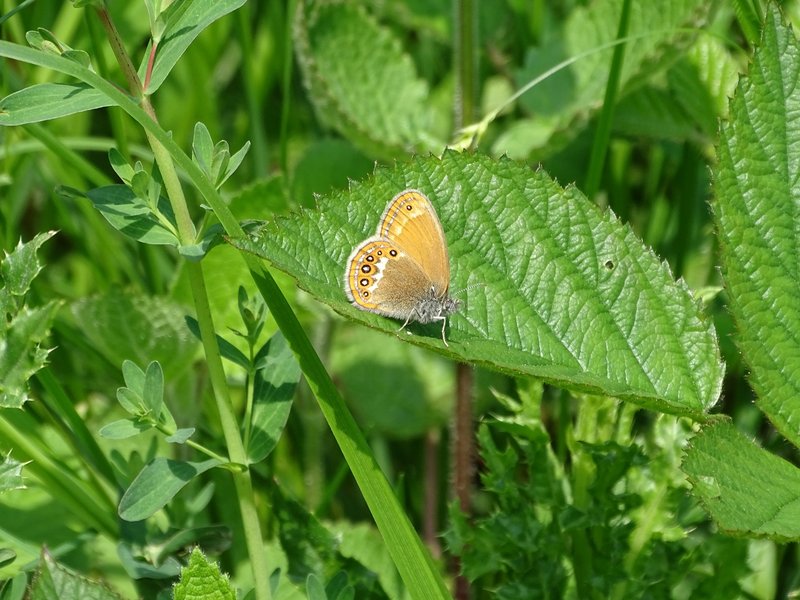Coppices (Figures 1 and 2) with a long history of use are considered centres of biodiversity. They consist of widely spaced individual trees and wood that is regularly cut back in the undergrowth. This historical form of forest use results in highly diverse forest structures and a lot of sunlight on the forest floor. Among butterflies in particular, there are some greatly threatened sparse forest species that can be promoted very well through coppice management. But is this also the case for areas without any sort of coppice tradition when high forests are are quasi transformed in one fell swoop?
A joint project between ForstBW, the Baden-Württemberg Biodiversity Conservation Programme and the Forest Research Institute Baden-Württemberg (FVA) explores this question: an experiment with the aim of promoting a small residual population of the endangered scarce heath (a small butterfly) (Fig. 3) is intended to provide answers.
Coppicing as a successful species conservation measure
‘In 2017, when potential areas for coppice management were sought on the Ostalb, only a single scarce heath could be found in the current project areas,’ recalls Nora Dalüge, a scientist at the FVA. ‘In particular, preserving and developing the remaining reserves of the scarce heath protected under European law motivated us to encourage the establishment of coppice project areas in the state forest.’
In February 2019, ForstBW implemented the first measures in the Ostalb forest district in the direction of coppice cultivation. Conversion to the new forest structure continued in the following years. Diurnal butterflies and moths were recorded throughout the entire period.
Butterflies and moths benefit greatly from coppice cuts
‘The scarce heathhas reacted very well to this form of management,’ says Nora Dalüge happily. Two years after the cutting measures, the project areas had a typical coppice structure with a grass and herb layer exposed to the sun, shrub vegetation and the remaining trees. Dalüge was already able to count 30 scarce heath specimens in 2021 and as many as 68 in 2022. Other highly endangered species, such as the Zygaena osterodensis moth (Fig. 4), were found as well.
Thanks in part to volunteer experts, a total of 43 diurnal butterfly and five Zygaena species have been recorded in the project areas to date, as well as over 200 moth species.
‘For butterflies, the question of whether even non-traditional coppice cuts are suitable for species promotion can be clearly answered in the affirmative,’ emphasises Nora Dalüge. The present results were a great success. In addition, 40 percent of all diurnal butterfly and Zygaena species out of the Swabian Jura’s natural area potential can now be found in the experimental areas.

Figure 4: Zygaena osterodensis was also found on the project site (Photo: Hectonichus, Zygaenidae - Zygaena osterodensis, CC BY-SA 3.0).
Background
As part of ForstBW's "Habitat Tree and Deadwood Concept", the FVA, together with species experts, suggested the creation of habitat in coppice with standards areas, which were then planned by the forest management and implemented by ForstBW. The FVA accompanies the measures and, among other things, monitors the development of the scarce heath.



